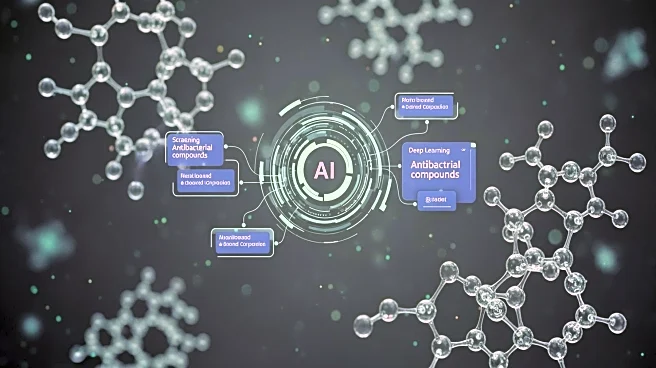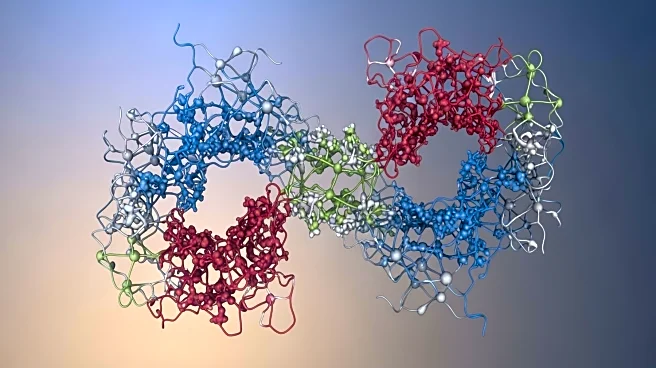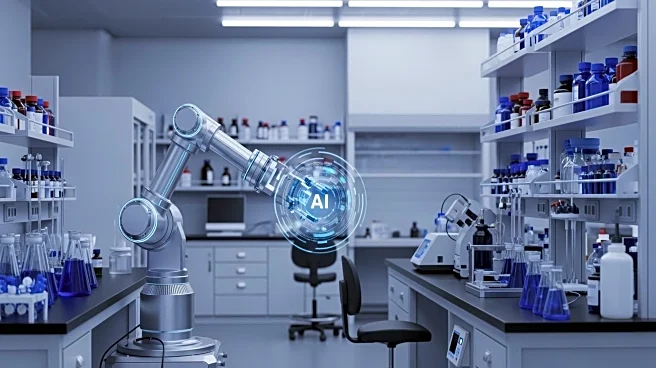What's Happening?
Researchers at the University of Illinois Urbana-Champaign have developed a new large language model, LassoESM, designed to predict the properties of lasso peptides, which are natural products of bacteria
with therapeutic potential. Lasso peptides are known for their knot-like structures, providing high stability and diverse biological activities, making them promising candidates for new therapeutics targeting cancer and infectious diseases. The model aims to improve the efficiency of drug discovery by accurately predicting enzyme-peptide interactions, which are crucial for the biosynthesis of these peptides. The research team, led by Doug Mitchell and Diwakar Shukla, has combined machine learning with experimental data to enhance the prediction capabilities of LassoESM, potentially expanding the clinical applications of lasso peptides.
Why It's Important?
The development of LassoESM represents a significant advancement in the field of drug discovery, particularly in the use of AI to streamline the identification and development of new therapeutics. By accurately predicting the properties of lasso peptides, researchers can accelerate the process of drug development, potentially leading to more effective treatments for cancer and infectious diseases. This innovation not only enhances the efficiency of scientific research but also opens new avenues for the application of AI in biotechnology, offering a powerful tool for the rational design of functional peptides with biomedical and industrial applications.
What's Next?
The research team plans to expand the capabilities of LassoESM to accommodate new prediction tasks, such as engineering lasso peptides to target specific proteins. This could lead to the development of tailor-made language models for other peptide natural products, further broadening the scope of AI applications in drug discovery. The ongoing collaboration between machine learning experts and experimental scientists will continue to refine the model, potentially unlocking new therapeutic possibilities and enhancing the precision of peptide engineering.
Beyond the Headlines
The use of AI in predicting lasso peptide properties highlights the growing importance of interdisciplinary collaboration in scientific research. By integrating computational biology with experimental validation, researchers can overcome the limitations of traditional methods, paving the way for more innovative and efficient approaches to drug discovery. This development also underscores the potential of AI to transform the landscape of biotechnology, offering new insights into complex biological interactions and expanding the possibilities for therapeutic innovation.











